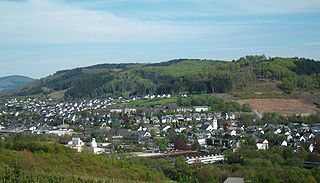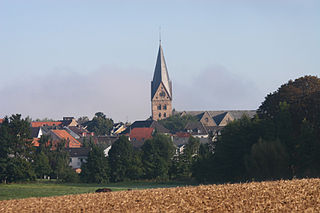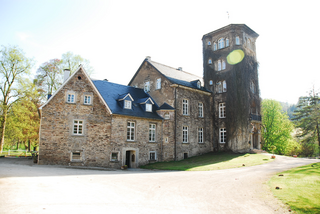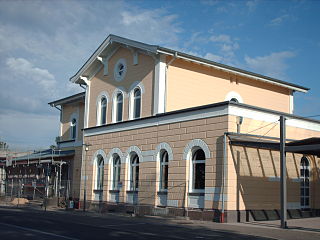
Winterberg is a town in the Hochsauerland district of North Rhine-Westphalia, central Germany and a major winter sport resort of the Wintersport Arena Sauerland.

Gevelsberg is a town in the district of Ennepe-Ruhr-Kreis, in North Rhine-Westphalia, Germany.

Schwelm is a town in the district of Ennepe-Ruhr-Kreis in the administrative region of Arnsberg within the state of North Rhine-Westphalia.

Heinsberg is a town in North Rhine-Westphalia, Germany. It is the seat of the district Heinsberg. It is situated near the border with the Netherlands, on the river Wurm, approx. 20 km north-east of Sittard and 30 km south-west of Mönchengladbach.

Fröndenberg is a town in the district of Unna, in North Rhine-Westphalia, Germany.

Brilon is a town in North Rhine-Westphalia, central Germany, that belongs to the Hochsauerlandkreis.

Alpen is a municipality in the district of Wesel, North Rhine-Westphalia, Germany.

Leichlingen (officially Leichlingen (Rheinland); Ripuarian: Lëijchlinge) is a town in the Rheinisch-Bergischer Kreis, North Rhine-Westphalia, Germany. Leichlingen is a centre for apple and berry growing in the region.

Castrop-Rauxel, often simply referred to as Castrop by locals, is a former coal mining city in the eastern part of the Ruhr Area within the state of North Rhine-Westphalia in Germany.

Lüdinghausen is a town in district of Coesfeld in the state of North Rhine-Westphalia, Germany. It is located on the Dortmund-Ems Canal, approx. 25 km south-west of Münster.

Senden is a municipality in the district of Coesfeld, in North Rhine-Westphalia, Germany.

Hallenberg is a town in the Hochsauerland district, in North Rhine-Westphalia, Germany.

Medebach is a town in the Hochsauerland district, in North Rhine-Westphalia, Germany.

Bestwig is a municipality in the Hochsauerland district, in North Rhine-Westphalia, Germany.

Steinheim is a town in Höxter district in North Rhine-Westphalia, Germany.

Lennestadt lies in the Sauerland in southeast North Rhine-Westphalia and is a community in Olpe district. It is the district's most populous municipality. Lennestadt itself is not an actual town but a community which comprises several towns and villages.

Finnentrop is a Gemeinde (municipality) in Olpe district in North Rhine-Westphalia, Germany.

Herten is a town and a municipality in the district of Recklinghausen, in North Rhine-Westphalia, Germany. It is situated in the industrial Ruhr Area, some 5 km (3.1 mi) west of Recklinghausen.

Wickede (German pronunciation:[ˈvɪkədə]), officially Wickede (Ruhr), is a municipality in the district of Soest, in North Rhine-Westphalia, Germany. Wickede lists the town of Jemielnica in Poland as its twin city and enjoys the cultural exchange and relationship.

Lengerich is a town in the district of Steinfurt, in North Rhine-Westphalia, Germany. It is situated on the southern slope of the Teutoburg Forest, approx. 15 km south-west of Osnabrück and 30 km north-east of Münster.





























